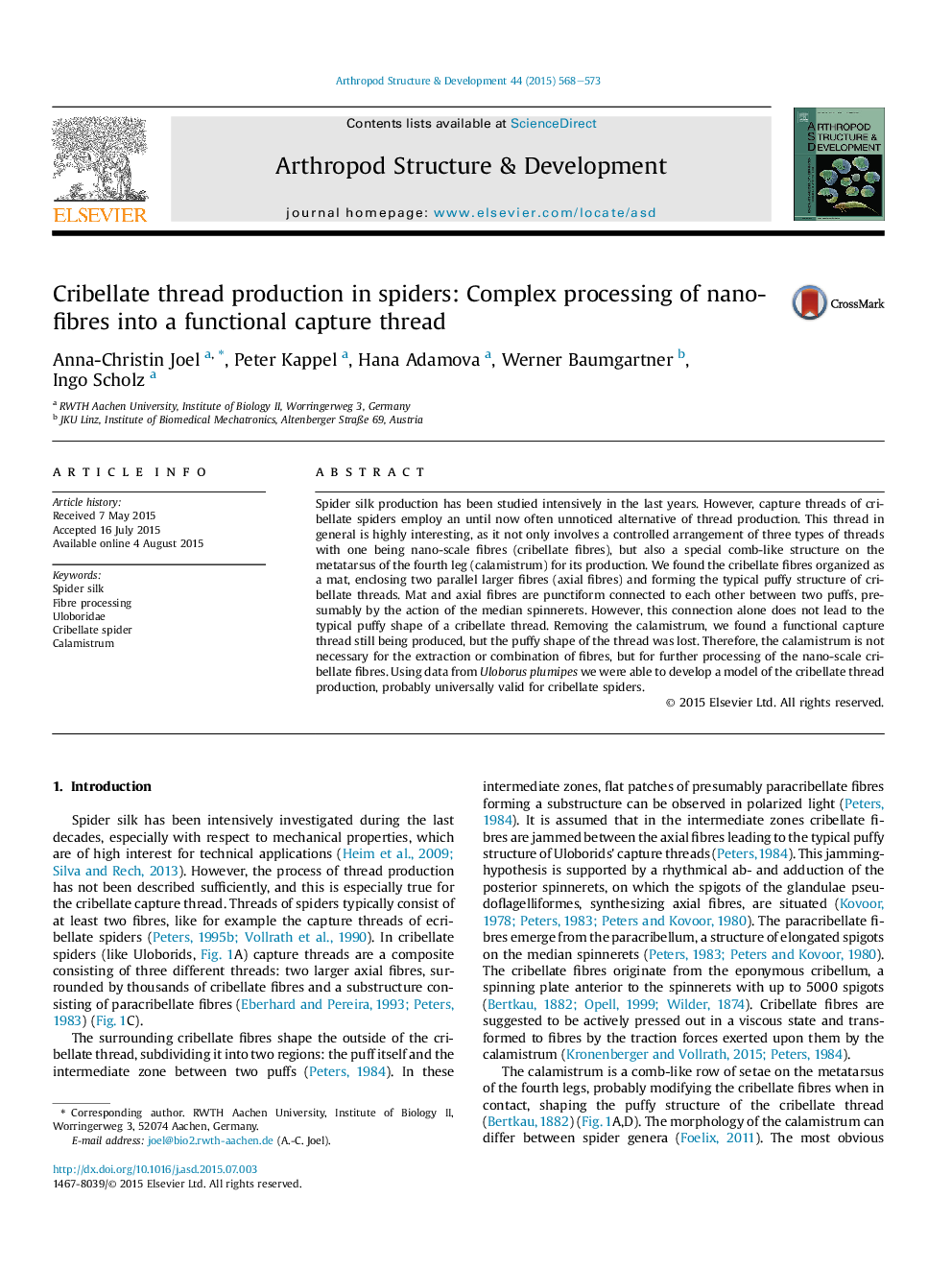| Article ID | Journal | Published Year | Pages | File Type |
|---|---|---|---|---|
| 2778575 | Arthropod Structure & Development | 2015 | 6 Pages |
•Cribellate fibres are organized as a mat, which is linked to the axial fibres.•The controlled spinneret movement is involved in the assembly of the cribellate thread.•The calamistrum is not necessary for extracting fibres.•The action of the calamistrum produces the puffy shape of cribellate thread.
Spider silk production has been studied intensively in the last years. However, capture threads of cribellate spiders employ an until now often unnoticed alternative of thread production. This thread in general is highly interesting, as it not only involves a controlled arrangement of three types of threads with one being nano-scale fibres (cribellate fibres), but also a special comb-like structure on the metatarsus of the fourth leg (calamistrum) for its production. We found the cribellate fibres organized as a mat, enclosing two parallel larger fibres (axial fibres) and forming the typical puffy structure of cribellate threads. Mat and axial fibres are punctiform connected to each other between two puffs, presumably by the action of the median spinnerets. However, this connection alone does not lead to the typical puffy shape of a cribellate thread. Removing the calamistrum, we found a functional capture thread still being produced, but the puffy shape of the thread was lost. Therefore, the calamistrum is not necessary for the extraction or combination of fibres, but for further processing of the nano-scale cribellate fibres. Using data from Uloborus plumipes we were able to develop a model of the cribellate thread production, probably universally valid for cribellate spiders.
